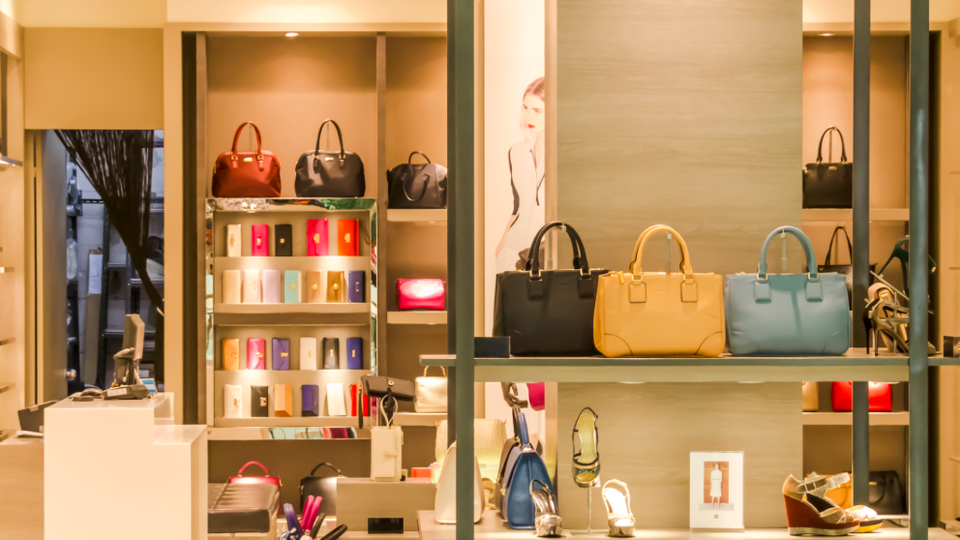
Our weekly analysis of the luxury news headlines
Paris Fashion Week: Reinventing – or just Revisiting – the Classics

Chanel s/s 2011 show
Wednesday marked the finalé of the spring/summer 2011 fashion shows in Paris, which makes this the final in our five part series chronicling what the catwalks are telling us about the state of the luxury industry. Leave it to a wire service like Reuters to condense 500 fashion shows over a one month period across four countries into just eight words: “Luxury fashion enjoys a rebound, takes no risks,” read Friday’s headline. And a pretty accurate one it was, most critics would say.
“The problem with the clothes is they don’t get under your skin. They’re a little boring,” objected the New York Times’s columnist Cathy Horyn, when describing why Yves Saint Laurent’s creative director Stefano Pilati failed to put forth what he had purported to be a “new tribe of fashion.” Pilati, like so many luxury brand designers this season, seemed obsessed with revisiting the brands’ classic items. In Pilati’s case, the reason was abundantly clear – Paris had been awash with celebrations and retrospectives on YSL’s founder for over a year.
“ Observers felt that the message designers were sending back to the markets was that the markets themselves were still cautious ”
Likewise, it was only natural for Sarah Burton, Alexander McQueen’s former assistant who is now the brand’s head designer, to follow a similar ‘homage’ strategy in light of McQueen’s tragic death earlier this year. Same for Jean Paul Gaultier, who went back to Hermès’s equestrian heritage in his swan song collection in order to wrap up their seven year collaboration.
But with the most celebrated labels in Paris ready-to-wear such as Lanvin, Chanel, Valentino and Akris (in contrast to those bankrolled by accessories) still relying heavily on tried and tested design templates, more than a few observers felt that the message they were sending back to the markets was that the markets themselves were still cautious. “Reliable as a fine Swiss watch,” said the Associated Press fashion writer Jenny Barchfield about the likes of Akris.

Céline (by Phoebe Philo), s/s 2011
Another muffled criticism that can be read between the lines in several reports is that many of the brands showing in Paris continue to skew their product offering too heavily toward formal and evening apparel while today’s luxury consumers actually lead much more varied lifestyles and need more varied wardrobes accordingly. One place where the author didn’t beat around the bush to say so was in the Wall Street Journal.
“ The one house that does seem to be giving the market what it wants (and more besides) is Céline ”
The one house that does seem to be giving the market what it wants (and more besides) is Céline. Under Phoebe Philo, Céline has fast become a stand-out collection among the biannual Paris shows. If the raving reviews are any indication, this season’s range has cemented Céline status as a new aesthetic leader of sorts. The AP’s Barchfield suggested that Philo’s aim was nothing short of redefining luxury values. Making her the industry’s darling all over again (following her first rise to fame designing for Chloé several years ago), the collection “sent the industry into yet another orgy of adoration,” wrote the FT’s Vanessa Friedman. Style.com’s Nicole Phelps said in her review, “Phoebe Philo’s influence extends from the highest echelons of style… all the way to the high street.”
If Céline is indeed, as so many insiders appear confident enough to proclaim, “the one to watch”, then the entire luxury industry would be wise take note of Philo’s mood: a highly contemporary interpretation of austere palettes, purity of line, comfort and artisanal textiles and details. If ever fashion’s leading trends could lend their aesthetic cues to luxury sectors across the board, it’s probably now.
All about India

Inside the Oberoi Vanyavilas Hotel
When it comes to the Indian market, until very recently, most luxury brands talked the talk but few actually walked the walk. The way observers describe India, unlike neighbouring China which continues to overshadow it as an attractive target market, was in terms of ‘long term investment’ – meaning that few actually expected short-term rewards. The scale and pace of expansion into the country, although exciting enough from its low base figures, seemed stifled by umpteen operational barriers, leaving many luxury pundits with niggling doubts. As if one needed any more proof, last week seemed to provide more than enough after the country suffered seriously negative international press over delays and the shoddy quality of its sporting facilities for the Commonwealth Games which it is currently hosting.
On the sidelines of the CII Luxury Goods Forum, which took place in Delhi on Thursday, Giorgio Armani Group’s deputy chairman John Hooks, seemed to corroborate the fact that many big brands still consider India to be an unknown quantity. “We are not in a hurry to open shops here as we do not want to make any big mistake,” he told India’s financial daily, the Economic Times and refrained from outlining any timeline for the “total of 10 to 12 stores” that he said the brand might eventually open after it moves beyond its current two-store presence in Delhi. “We have to…resist the temptation to be an opportunist,” he said before uttering that all-too-familiar phrase, “We expect a long term in the country.”
“ We have to resist the temptation to be an opportunist; we don’t want to make any big mistake ”
Other headlines from the week, however, provided clues that the luxury industry is finally becoming more serious about India; and that this lumbering but potentially immense market may finally be about to turn the corner and gain some momentum. First came the figure of €150 million that luxury trade body Altagamma said it estimated Italian brands would invest over the next five years, through the opening of around 50-60 new boutiques (Fox Business News) and then the joint report by the Confederation of Indian Industry and consulting firm A.T. Kearney which estimated that the Indian market would more than triple by 2015 from about $4.76 billion in 2009.
Not surprisingly, the managing director of the Indian joint-venture distribution partner for brands such as Bottega Veneta, Jimmy Choo, Canali and Paul Smith – who is also chairman of the CII forum – was upbeat. “We have the right environment in place for international luxury brands to have a retail presence across our major metros,” said Sanjay Kapoor of Genesis Colors (Luxury Insider). “I feel we are at the threshold of a great expansion.”

Inside the DLF Emporio mall in Delhi
MSN reported on two of the most recent examples. Aditya Birla Group firm Madura Garments Lifestyle Retail, which operates The Collective of multibrand boutiques in Delhi, Mumbai and Bangalore will add Missoni and Vivienne Westwood to its assortment which already includes Tom Ford, D&G;, Burberry, Versace Prada and Michael Kors among others. The news is worth noting because Westwood and Missoni are the sort of brands that analysts have traditionally said would have to wait until the market becomes more sophisticated and segmented before gaining popularity in a place like India.
The other MSN story revolved around India’s perennial problem: that it still lacks enough suitable retail space for luxury goods. But real estate developer DLF, which operates the luxury mall DLF Emporio in Delhi, is now said to be considering the construction of similar malls in Hyderabad and Chennai. “There are some 10-12 anchor brands we are in discussions with to bring up similar models in other cities,” said DLF malls business head Savitri Devi Singh, suggesting that the company was exploring the possibility with existing tenants at its Delhi location.










